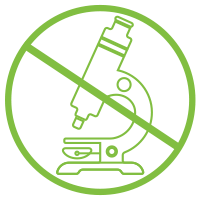
Banner-Savaysa for Afib
SAVAYSA for AFib
The Only Once-Daily Blood Thinner That

SAVAYSA for AFib
SAVAYSA for AFib
SAVAYSA® (edoxaban) is a prescription medicine used to reduce the risk of stroke and blood clots in people who have atrial fibrillation (AFib) not caused by a heart valve problem. Based on how well your kidneys work, SAVAYSA may not be a treatment option for you. Your doctor should check your kidney function before starting treatment.

SAVAYSA works differently than warfarin
SAVAYSA works differently than warfarin
In a clinical study that compared it to warfarin (a blood thinner that has been used for years to treat AFib), SAVAYSA was shown to be just as effective at reducing the risk of stroke and blood clots, and it caused less major bleeding than warfarin; however, it was more likely to cause gastrointestinal bleeding (e.g. stomach and intestinal bleeding). How else is SAVAYSA different?
-
 You don't need to have routine blood tests
You don't need to have routine blood tests -
 There are no special food restrictions—you can eat a normal, healthy diet
There are no special food restrictions—you can eat a normal, healthy diet
Once-daily dosing
SAVAYSA is just one tablet taken at the same time each day. You choose what time of day you'll take it—so you can pick a time that fits conveniently into your daily routine. Also, you can take SAVAYSA with or without food.
-
 One tablet
One tablet -
 Same time
Same time -
 Each day
Each day
Take SAVAYSA exactly as prescribed
Take SAVAYSA exactly as prescribed.
Your doctor will decide how long you should take SAVAYSA.
- Do not change your dose or stop taking SAVAYSA unless your doctor tells you to. If you are taking SAVAYSA for atrial fibrillation, stopping SAVAYSA may increase your risk of having a stroke
- If you miss a dose of SAVAYSA, take it as soon as you can that same day, and do not take more than one dose at the same time. Take your next dose at your usual time the next day
- Refill your prescription so you do not run out of SAVAYSA
- If you take too much SAVAYSA, go to the emergency room or call your doctor right away
- Call your doctor right away if you fall or injure yourself, especially if you hit your head. Your doctor may need to check you
- Common side effects in people who take SAVAYSA include bleeding and anemia. Talk to your doctor if you have any side effect that bothers you or that does not go away.
See below for Important Safety Information

SAVAYSA for AFib Story Navigation
Important Safety Information
Indication
SAVAYSA® (edoxaban) is a prescription medicine used to reduce the risk of stroke and blood clots in people who have atrial fibrillation not caused by a heart valve problem. Based on how well your kidneys work, SAVAYSA may not be a treatment option for you. Your doctor should check your kidney function before starting treatment.
SAVAYSA® is a prescription medicine used to treat blood clots in the veins of your legs (deep vein thrombosis) or lungs (pulmonary embolism), after you have been treated with an injectable blood thinner medicine for 5 to 10 days.
What is the most important information I should know about SAVAYSA?
-
People with atrial fibrillation are at an increased risk of forming a blood clot in the heart, which can travel to the brain, causing a stroke, or to other parts of the body. SAVAYSA lowers your chance of having a stroke by helping to prevent clots from forming.
Your doctor should check your kidney function before you start taking SAVAYSA. People whose kidneys work really well should not receive SAVAYSA because it may not work as well as other medications to prevent stroke.
Do not stop taking SAVAYSA without first talking to the doctor who prescribed it for you. Stopping SAVAYSA increases your risk of having a stroke.
-
SAVAYSA can cause bleeding which can be serious, and sometimes lead to death. This is because SAVAYSA is a blood thinner medicine that reduces blood clotting. While taking SAVAYSA you may bruise more easily and bleeding may take longer to stop. You should call your doctor or get medical help right away if you experience bleeding that is severe (for example, coughing up or vomiting blood) or bleeding that cannot be controlled.
You may have a higher risk of bleeding if you take SAVAYSA and take other medicines that increase your risk of bleeding, including: aspirin, long-term use of nonsteroidal anti-inflammatory drugs (NSAIDs), blood thinners (warfarin, heparin, or other medicines to prevent or treat blood clots), selective serotonin reuptake inhibitors (SSRIs), and serotonin norepinephrine reuptake inhibitors (SNRIs). Tell your doctor if you take any of these medicines. Ask your doctor or pharmacist if you are not sure if your medicine is one listed above.
-
SAVAYSA is not for people with mechanical heart valves or people who have moderate-to-severe narrowing (stenosis) of their mitral valve.
-
SAVAYSA is not for use in people with antiphospholipid syndrome (APS), especially with positive triple antibody testing, who have a history of blood clots.
-
Spinal or epidural blood clots (hematoma). People who take a blood thinner medicine (anticoagulant) like SAVAYSA, and have medicine injected into their spinal and epidural area, or have a spinal puncture have a risk of forming a blood clot that can cause long-term or permanent loss of the ability to move (paralysis). Your risk of developing a spinal or epidural blood clot is higher if: a thin tube called an epidural catheter is placed in your back to give you certain medicine, you take NSAIDs or a medicine to prevent blood from clotting, you have a history of difficult or repeated epidural or spinal punctures, and you have a history of problems with your spine or have had surgery on your spine.
If you take SAVAYSA and receive spinal anesthesia or have a spinal puncture, your doctor should watch you closely for symptoms of spinal or epidural blood clots. Tell your doctor right away if you have back pain, tingling, numbness (especially in your legs and feet), muscle weakness, loss of control of the bowels or bladder (incontinence).
Who should not take SAVAYSA?
Do not take SAVAYSA if you currently have certain types of abnormal bleeding.
What should I tell my doctor before taking SAVAYSA?
-
Before you take SAVAYSA, tell your doctor if you: have liver or kidney problems, have antiphospholipid syndrome, have ever had bleeding problems, have a mechanical heart valve, have cancer of the stomach or intestine (gastrointestinal cancer), are pregnant or plan to become pregnant, are breastfeeding or plan to breastfeed.
- It is not known if SAVAYSA will harm your unborn baby. Tell your doctor right away if you become pregnant during treatment with SAVAYSA
- It is not known if SAVAYSA passes into your breast milk. You and your doctor should decide if you will take SAVAYSA or breastfeed. Do not breastfeed during treatment with SAVAYSA
-
Tell all of your doctors and dentists that you are taking SAVAYSA. They should talk to the doctor who prescribed SAVAYSA for you, before you have any surgery, medical or dental procedure. Tell your doctor about all the medicines you take, including prescription and over-the-counter medicines, vitamins, and herbal supplements. Some of your other medicines may affect the way SAVAYSA works. Certain medicines may increase your risk of bleeding or stroke when taken with SAVAYSA.
How should I take SAVAYSA?
-
Take SAVAYSA exactly as prescribed by your doctor. Your doctor will decide how long you should take SAVAYSA. Do not change your dose or stop taking SAVAYSA unless your doctor tells you to. You can take SAVAYSA with or without food. If you miss a dose of SAVAYSA, take it as soon as you remember on the same day, and do not take more than one dose at the same time. Take your next dose at your usual time the next day. Do not run out of SAVAYSA. Refill your prescription before you run out.
-
If you take too much SAVAYSA, go to the nearest hospital emergency room or call your doctor right away. Call your doctor right away if you fall or injure yourself, especially if you hit your head. Your doctor may need to check you.
What are the possible side effects of SAVAYSA?
Common side effects in people who take SAVAYSA include, bleeding and low red blood cell count (anemia). Talk to your doctor if you have any side effect that bothers you or that does not go away. Call your doctor for medical advice about side effects. You may report side effects to FDA at 1-800-FDA-1088.
Please see the U.S. Full Prescribing Information, including Boxed WARNINGS and Medication Guide.

